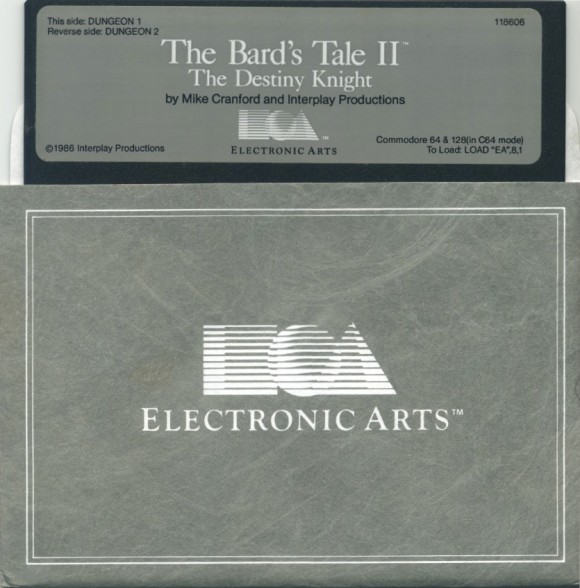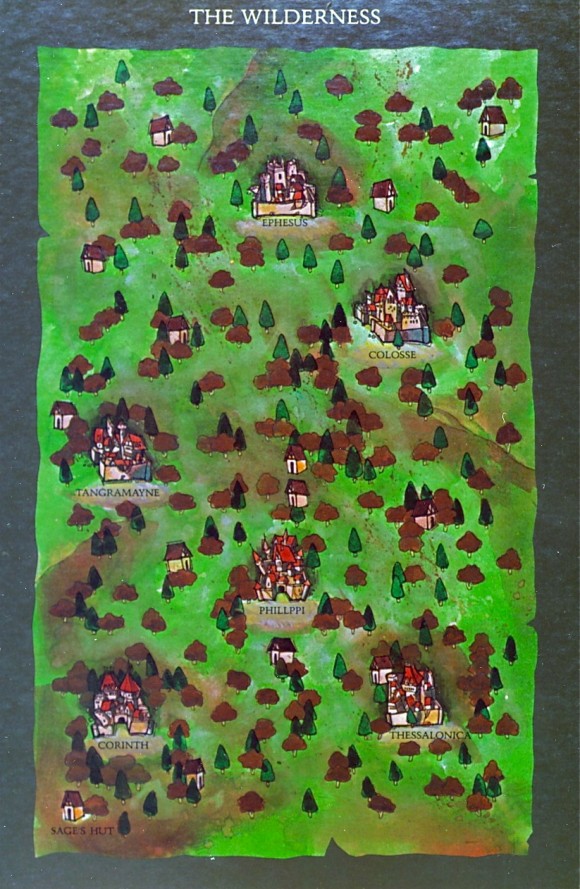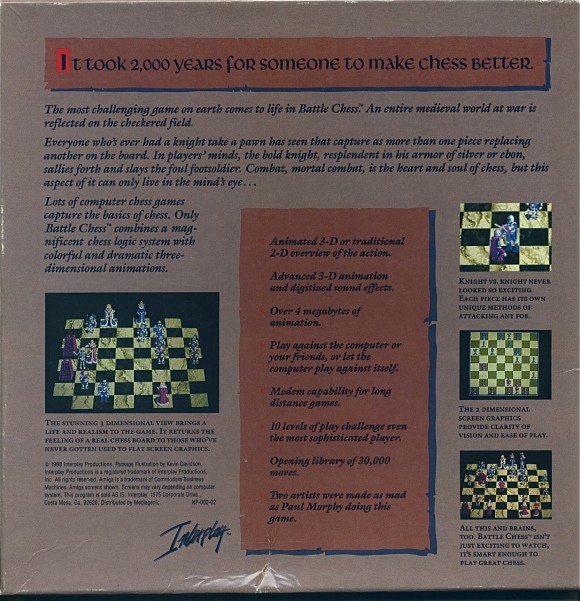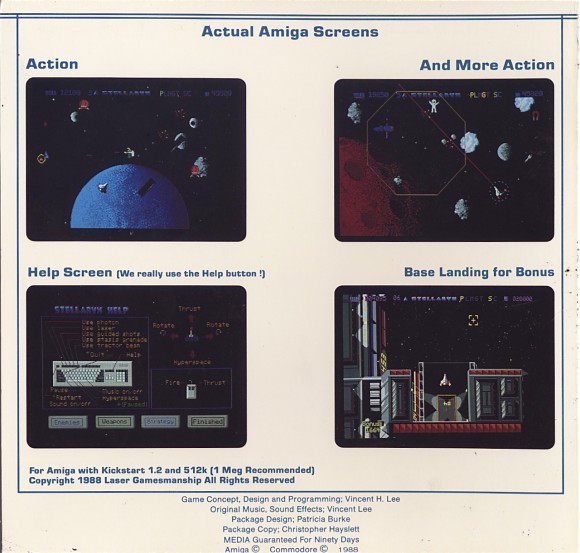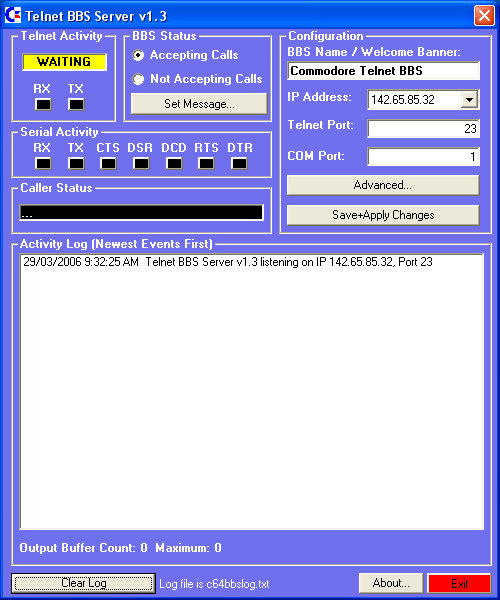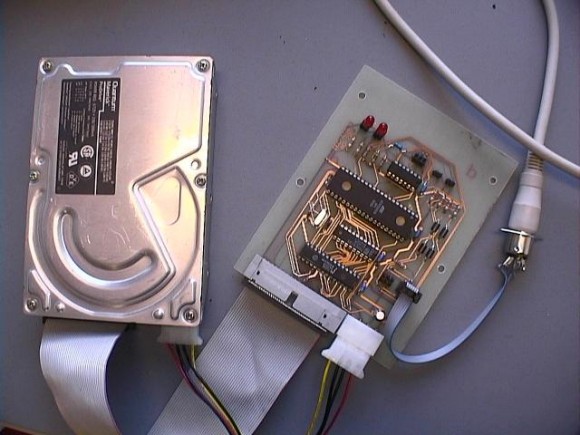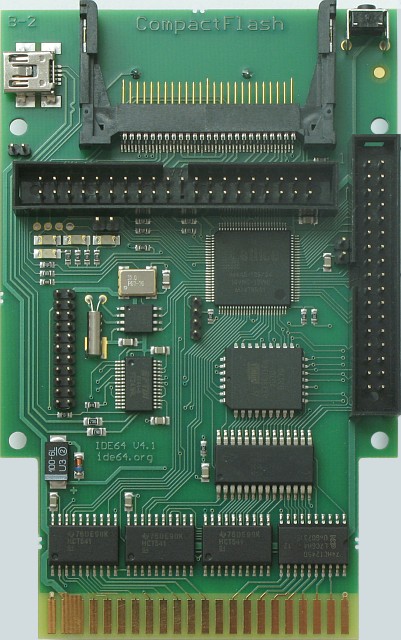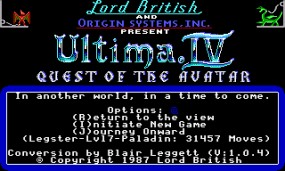Twelve Awesome Commodore 64 Hacks and Projects, and a Gallery of Classic C64 Game Discs
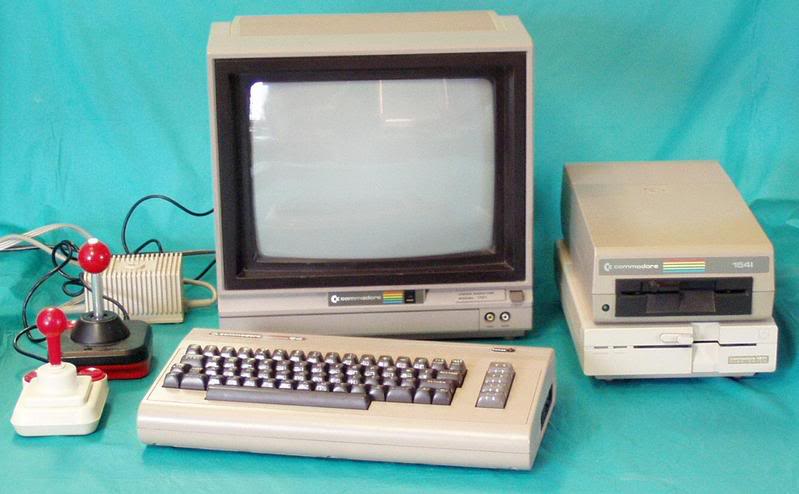
I recently visited my folks and as usual, spent most of my late evenings there digging through all my childhood belongings. Comic books, skateboard parts, Guitar Player magazines. And my Commodore 64. Flipping through all the old floppy discs and remembering the countless hours playing games, I started to think about what the C64 community is up to nowadays. Turns out, quite a bit…
Also, check out the scans of my old disks and game boxes at the end of the post. I put a batch from my Amiga 1000 in there too. Anything that you remember from growing up?
====================
C64 Laptop: Take the guts from your Commodore, an LCD screen, and an SD storage system designed on the DTV-64 platform (more about that below), put it all together in a CNC-made custom laptop case, and you’ve got something that would make everyone jealous of you while taking notes in class… in 1986. This is the “what if” laptop that could have been, if laptops were around in the mid-80s.
====================
Restore the yellowing Commodore plastic to a brand-new looking grey: A group of Commodore enthusiasts, including a chemical engineer, took it upon themselves to determine what was the cause of their mid-80’s electronics’ plastic housings. Turns out, the plastic had been treated with an flame-retardent chemical that causes discoloration over time. Reverse-engineering the process, they developed and published a DIY solution for removing the brown color and making your C64 look as new as the day you bought it.

(comments say that toothpaste works well too)
====================
C64 BBS: Before the internet became a daily part of everyone’s life, only the geekiest of computer geeks would venture online, gathering on what were called Bulletin Board Systems (BBS). Unlike websites, that are hosted by universally accessible web servers, BBSs were simple software setups on a home computer that users could dial into via modem. If someone had already dialed in, you’d simply have to try again later. Similar to message boards, they primarily supplied text communication, with simple email setups and public postings. Over time, rudimentary images started showing up, helped out by increasing modem speeds and computer processing. And then one day, the internet took over the planet and BBSs became a forgotten part of history.
Here’s how to turn your C64 into a BBS server, one that can be connected via Telnet, allowing users to avoid trying to find and connect a telephone modem to their computers. Bring back that antique fun!
====================
C64 Emulator: Turn your iPhone into a pocket-sized Commodore 64. This app was released a couple years ago, and then pulled by Apple from the app store for having an easter egg that let you do BASIC programming on it. But not it looks to be back, and it still has some sort of programming component to it. Very cool. The application also includes a small bundle of classic games (I was always a fan of the basic but fun Jupiter Lander), while more games can be purchased from within the app.
====================
ATA hard drive: 128 GB hard drives seem small by today’s standards but might be big enough to hold all the software ever programmed for a C64. “IEC-ATA is a hard drive controller for the Commodore IEC serial bus. It enables all computers that has an IEC serial bus port (e.g VIC-20, C-64, C-128) to use cheap, easy to get ATA hard drives (also called IDE hard drives).”
1541 case for the hard drive: Modify the housing of the ubiquitous 1541-II floppy drive to hold your ATA/IDE drive in a fitting way.
====================
C64 micro-micro laptop: the Picodore 64
Earlier, we referenced the DTV. Here are the details – a few years ago, a company released a joystick-enclosed Commodore 64 (they were able to shrink the entire thing to fit on a couple computer chips), called “Direct to TV” (DTV). The joystick plugs directly into the television and comes with a few games. Hackers immediately pulled the thing open and realized that it is possible to wire in connections to enable all of the original functions of a Commodore 64 (disk drive, expansion ports, etc) and even improve upon them. All the while, keeping the whole thing as small as a joystick, or being placed into homemade enclosures. The Picodore64 is one of the coolest ones I came across. 5″ LCD screen! Which apparently takes up the majority of the power requirements for this thing.
More details and two other DTV case builds are here: Micro-tower C64; Keyboard console
====================
Matthias Wandel has writeups about a few vintage DIY projects he did with his Commodore 64, back when it was current:
Homemade pen/drum plotter: built from miscellaneous components (the drum was a tube for a vodka bottle; the pen a Bic), and programmed using assembly language (impressive for a young kid from northern Canada!), and output through the C64’s user port.
He even designed his own font for it.
He also made his own wooden joystick. Looks like something you’d see in Amish country, in a weird alternative universe.

And an early (1985) drum scanner, using a single CDS light cell/sensor, housed in a Bic pen cap.
====================
C64 USB card reader/IDE hard drive/CD interface
Another drive hack, but this one much more expanded – letting you use an IDE drive, CD, or even SD/compact flash memory cards. The exciting part is the speed comparison of the original 1541 drive to a flash card. Over 100x faster. Imagine that.
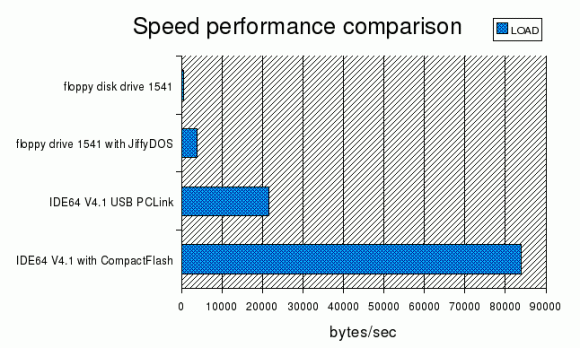
====================
Download some warez: the term used for hacked games/software that is shared online. Lots of fun classic games here. Get your CF drive setup and download them all!
Just something to chew on: Ultima IV, arguably the best game of all time, is 210Kb. Which is why you can play Ultima IV in Flash, right on your browser.
====================
Here’s a partial gallery of discs from my Commodore 64 (and Amiga 1000) gaming days. Lots of time spent on these floppies.




